Jagannath (Odia: ???????, IAST: Jagann?tha, or Jagannatha) literally means "Lord of the Universe" and is a deity worshipped in regional traditions of Hinduism and Buddhism in India and Bangladesh. Jagannath is considered a form of Vishnu. He is a part of a triad along with his brother Balabhadra and sister Subhadra. To some Vaishnava Hindus, Jagannath is an abstract representation of Krishna; to some Shaiva and Shakta Hindus, he is a symmetry-filled tantric representation of Bhairava; to some Buddhists, he is symbolism for Buddha in the Buddha-Sangha-Dhamma triad; to some Jains, his name and his festive rituals are derived from Jeenanath of Jainism tradition.
The icon of Jagannath is a carved and decorated wooden stump with large round eyes and a symmetric face, and the icon has a conspicuous absence of hands or legs. The worship procedures, sacraments and rituals associated with Jagannath are syncretic, and include rites that are uncommon in Hinduism. The origin and evolution of Jagannath worship is unclear. Some scholars interpret hymn 10.155.3 of the Rigveda as a possible origin, but others disagree and state that it is a syncretic deity with tribal roots. His name does not appear in the traditional Dashavatara (ten avatars) of Vishnu, though in certain Odia literature, Jagannath has been treated as the Ninth avatar, as a substitute for or the equivalent of the Buddha.
Jagannath is considered a non-sectarian deity. He is significant regionally in the Indian states of Odisha, Chhattisgarh, West Bengal, Jharkhand, Bihar, Gujarat, Assam, Manipur and Tripura. He is also significant to the Hindus of Bangladesh. The Jagannath temple in Puri, Odisha is particularly significant in Vaishnavism, and is regarded as one of the Char Dham pilgrimage sites in India. The Jagannath temple is massive, over 200 feet high in the Nagara Hindu temple style, and one of the best surviving specimens of post-Gupta Empire era Odisha art and architecture. It has been one of the major pilgrimage destination for Hindus since about 800 CE.
The annual festival called the Ratha yatra celebrated in June or July every year in eastern states of India is dedicated to Jagannath. His image along with the other two associated deities, is ceremoniously brought out of the sacrosanctum (Garbhagriha) of his chief temple in Puri (Oriya: Bada Deula). They are placed in a chariot, which is then pulled by numerous volunteers, thus transported to the Gundicha Temple (located at a distance of nearly 3 kilometres (1.9 mi)). They stay there for a few days, and are thereafter returned to the main temple. Coinciding with the Ratha Yatra festival at Puri, similar processions are organized at Jagannath temples throughout the world. This festive public procession of Jagannath in Puri, where the heavy carriage becomes a "massive inexorable force, an unstoppable public campaign that crushes whatever is in its path" is the source of the word Juggernaut.
Contents
Etymology
"Jagannath" is a compound word, consisting of "Jagat" and "Nath". The word nath means "Master, Lord" (n?tha) while jagan or jagat means the "universe". Thus, Jagannath means "lord of the universe".
— Surendra Mohanty, Lord Jagannatha: the microcosm of Indian spiritual culture
In the Odia language, "Jagannath" is linked to other names, such as "Jag?" (???) or "Jagabandhu" (???????) ("Friend of the Universe"). Both names derive from "Jagannath". Further, on the basis of the physical appearance of the deity, names like "K?lya" (?????) ("The Black-coloured Lord", but which can also mean "the Timely One"), "Darubrahman" (??????????) ("The Sacred Wood-Riddle"), "D?ru?debat?" (???? ????? "The wooden god"), Chak??khi (??? ???) or "Chak?nayan" (??? ??? "With round eyes"), "Cak?????" (??? ???? "with round pupils") are also in vogue.
According to Dina Krishna Joshi, the word may have origins in the tribal word Kittung of the Sora people (Savaras). This hypothesis states that the Vedic people as they settled into tribal regions adopted the tribal words and called the deity Jagannath. According to O.M. Starza, this is unlikely because Kittung is phonetically unrelated, and the Kittung tribal deity is produced from burnt wood and looks very different from Jagannath.
Iconography
The icon of Jagannath in his temples is a brightly painted, rough-hewn log of neem wood. The image consists of a square flat head, a pillar that represents his face merging with the chest. The icon lacks a neck, ears, and limbs, is identified by a large circular face symbolizing someone who is anadi (without beginning) and ananta (without end). Within this face are two big symmetric circular eyes with no eyelids, one eye symbolizing the sun and the other the moon, features traceable in 17th-century paintings. He is shown with an Urdhva Pundra, the Vaishnava U-shaped mark on his forehead. His dark color and other facial features are an abstraction of the cosmic form of the Hindu god Krishna, states Starza. In some contemporary Jagannath temples, two stumps pointing forward in hug-giving position represent his hands. In some exceptional medieval and modern era paintings in museums outside India, such as in Berlin states Starza, Jagannath is shown "fully anthropomorphised" but with the traditional abstract mask face.
The typical icon of Jagannath is unlike other deities found in Hinduism who are predominantly anthropomorphic. However, aniconic forms of Hindu deities are not uncommon. For example, Shiva is often represented in the form of a Shiva linga. In most Jagannath temples in the eastern states of India, and all his major temples such as the Puri, Odisha, Jagannath is included with his brother Balabhadra and sister Subhadra. Apart from the principal companion deities, Jagannath icon shows a Sudarshana Chakra and sometimes under the umbrella cover of multiheaded Sesha Naga, both linking him to Vishnu. He was one of the introduction to Hinduism to early European explorers and merchants who sailed into Calcutta and ports of the Bay of Bengal. The Italian Odoric of Pordenone who was a Franciscan friar, visited his temple and procession in 1321 CE, and described him in the language of the Church. William Burton, visited his temple at Puri in 1633, spelled him as Jagarnat and described him to be "in a shape like a serpent, with seven hoods".
When shown with Balabhadra and Subhadra, he is identifiable from his circular eyes compared to the oval or almond shape of the other two abstract icons. Further, his icon is dark, while Balabhadra's face is white, and Subhadra's icon is yellow. The third difference is the flat head of Jagannath icon, compared to semi-circular carved heads of the other two. They are accompanied by the Sudarshana Chakra, the iconic weapon of Vishnu. It is approximately the same height as Balabhadra, is red in colour, carved from a wooden pillar and clothed, unlike its traditional representation as a chakra in other Vishnu temples. Jagannath iconography, when he is depicted without companions, shows only his face, neither arms nor torso. This form is sometimes called Patita Pavana, or Dadhi Vaman.
The murtis of Jagannath, Balabhadra, Subhadra and Sudarshana Chakra are made of neem wood. Neem wood is chosen because the Bhavishya Purana declares it to be the most auspicious wood from which to make Vishnu murtis. The wood icon is re-painted every year before the Ratha-Yatra. It is replaced with a newly carved image every 12 or 19 years approximately, or more precisely according to the luni-solar Hindu calendar when its month of Asadha occurs twice in the same year.
Attributes
Jagannath is considered an avatar (incarnation) of Vishnu. Others consider him equivalent to the Hindu metaphysical concept of Brahman, wherein he then is the Avatar?, i.e., the cause and equivalence of all avatars and the infinite existence in space and time. According to author Dipti Ray in Prataparudra Deva, the Suryavamsi King of Odisha:
In Prataparudradeva's time Odia poets accepted Sarala Dasa's idea and expressed in their literary works as all the Avataras of Vishnu (Jagannath) manifest from him and after their cosmic play dissolute (bilaya) in him (Jagannath). According to them Jagannath is Sunnya Purusa, Nirakar and Niranjan who is ever present in Nilachala to do cosmic play ... The five Vaishnavite Sakhas of Orissa during Prataparudradeva's time expounded in their works the idea that Jagannath (Purushottama) is Purna Brahman from whom other Avataras like Rama, Krishna, etc., took their birth for lilas in this universe and at the end would merge in the self of Purna Brahman.
—?Dipti Ray
In the Jagannath tradition, he has the attributes of all the avatars of Vishnu. This belief is celebrated by dressing him and worshipping him as different avatars on special occasions. However he is most frequently identified with Krishna, the eighth avatar of Vishnu. The Puranas relate that the Narasimha Avatar of Vishnu appeared from a wooden pillar. It is therefore believed that Jagannath is worshipped as a wooden murti or Daru Brahma with the Sri Narasimha hymn dedicated to the Narasimha Avatar. Every year in the month of Bhadra, Jagannath is dressed and decorated in the form of the Vamana avatar of Vishnu. Jagannath appeared in the form of Rama, another avatar of Vishnu, to Tulsidas, who worshipped him as Rama and called him Raghunath during his visit to Puri in the 16th century.
Tantric deity
Outside of Vaishnava tradition, Jagannath is considered the epitome of Tantric worship. The symmetry in iconography, the use of mandalas and geometric patterns in its rites support the tantric connection proposal. Jagannath is venerated as Bhairava or Lord Shiva
Watch movie Jagannath online on Amazon
Watch movie Jagannath online
Watch The Movie On PrimeMithya Full HD Movie Download
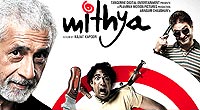
Garam Masala Full HD Movie Download

Mard Full HD Movie Download
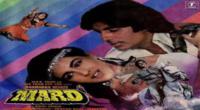
Highway Full HD Movie Download

Mera Saaya Full HD Movie Download
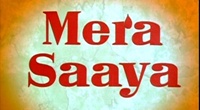
Jaan Tere Naam Full HD Movie Download
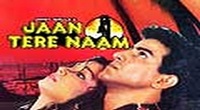
Andolan- Ek Violence Story Full HD Movie Download

Dharam Yudh (1988) Full HD Movie Download
.jpg)
Waqt Ki Deewar Full HD Movie Download

Ashanti Full HD Movie Download
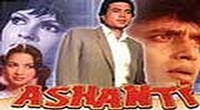
Bhairavi (1996) Full HD Movie Download
.jpg)
Mean Machine Full HD Movie Download

Jai Bhole Bam Bam Full HD Movie Download
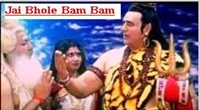
Maun Full HD Movie Download
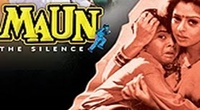
Indrajeet Full HD Movie Download
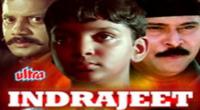
Addhuri: Achhu-Rachchu Love Story Full HD Movie Download
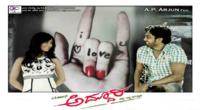
Bahurani Full HD Movie Download
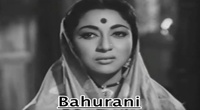
Kattumarakkaran Full HD Movie Download

Chandru Full HD Movie Download
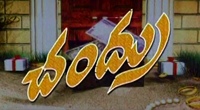
Mohabbatein Full HD Movie Download
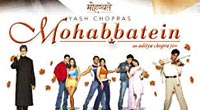
Rab Ne Bana Di Jodi Full HD Movie Download
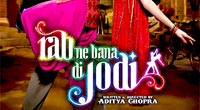
Download latest Movie from bollywood
- 1> baaghi 3
- 2> THE SKY IS PINK MOVIE FULL STORY AND REVIEW
- 3> Luka Chuppi
- 4> TO ALL THE BOYS I’VE LOVED BEFORE
- 5> Kabir Singh
- 6> Street Dancer 3D
- 7> Simmba
- 8> Gone Girl
- 9> The Girl Who Lived
- 10> Ludo
- 11> DILWALE DULHANIA LE JAYENGE
- 12> GUILTY
- 13> The Godfather
- 14> Adventures of Rusty
- 15> Sooryavanshi
- 16> Satyameva Jayate 2
- 17> Thappad
- 18> Bhool Bhulaiyaa 2
- 19> KGFChapter 2
- 20> Mardaani 2
- 21> Pinjar
- 22> Shivaji maharaj
- 23> Ek Villian 2
- 24> Hungama 2
- 25> Divergent
- 26> Mumbai Saga
- 27> The Internship
- 28> HIT (telugu)
- 29> Panga
- 30> The perfect date
- 31> 16 December
- 32> Gopala Gopala (Telugu)
- 33> Brahmastra
- 34> Gangubai Kathiawadi
- 35> Manmadhudu
- 36> Nenu local
- 37> Mahanati
- 38> Shatamanam bavathi
- 39> Lagaan
- 40> After
- 41> MOM
- 42> Shamshera
- 43> Raguvaran BTech
- 44> Khakee
- 45> The villain
- 46> OM
- 47> Mr. perfect
- 48> Bueatifull mind
- 49> Hichki
- 50> Gabbar Singh
- 51> Jogi
- 52> Before Sunrise
- 53> Before Sunset
- 54> Before Midnight
- 55> The Big Bull
- 56> Top Gun: Maverick
- 57> The Purge
- 58> The Sky is Pink
- 59> Laxmmi Bomb
- 60> Sadak 2
- 61> Sufna
- 62> Prithviraj
- 63> PK
- 64> Coolie No 1(2020)
- 65> Black Widow
- 66> Dear Zindagi
- 67> Dil Bechara
- 68> PHIR HERA PHERI
- 69> WAR
- 70> Dostana
- 71> RRR: Roudram Ranam Rudhiram
- 72> Maidan
- 73> Dabbang 3
- 74> Chhalaang
- 75> life as we know it
- 76> SherShaah
- 77> Sandeep Aur Pinky Faraar
- 78> Event Horizon
- 79> 83
- 80> Radhe: Your Most Wanted Bhai
- 81> Gunjan Saxena: The Kargil Girl
- 82> Mr India
- 83> Vivah
- 84> Anokha Bandhan
- 85> Ghost
- 86> Bhoot: Part One - The Haunted Ship
- 87> Haseen Dilruba
- 88> Laal Singh Chaddha
- 89> Qismat
- 90> Rajput
- 91> Drive
- 92> Dil Chahta Hai
- 93> Dil Ki Baazi
- 94> Dil Ka Rishta
- 95> Teesri Manzil
- 96> Dil
- 97> Love Aaj Kal
- 98> Khaali Peeli
- 99> Bunty Aur Babli 2
- 100> Atrangi Re
- 101> Gulabo Sitabo
- 102> Jodi
- 103> Suraj Pe Mangal Bhari
- 104> Deewana
- 105> Attack
- 106> Sardar Udham Singh
- 107> Toofan
- 108> THE LOVEBIRDS
- 109> Jersey
- 110> Ginny Weds Sunny
- 111> Thalaivi
- 112> Shiddat
- 113> Angels vs Zombies
- 114> Koi Mil Gya
- 115> Thank God
- 116> Bhuj: The Pride of India
- 117> Hum Aapke Hain Kaun
- 118> The Platform
- 119> Bird Box
- 120> Roohi Afzana
- 121> Torbaaz
- 122> Nikamma
- 123> World War Z
- 124> Extraction
- 125> Train to Busan
- 126> Life of Pi
- 127> SHAADI MEIN JROOR AANA
- 128> Himmat Aur Mehnat
- 129> To All The Boys: P.S. I Still Love You
- 130> Mimi
- 131> Good Newwz
- 132> Shubh Mangal Zyada Saavdhan
- 133> Raabta
- 134> Harry Potter and the Philosopher's Stone
- 135> Harry Potter and the Chamber of Secrets
- 136> Chhapaak
- 137> War of the Worlds
- 138> Harry Potter and the Prisoner of Azkaban
- 139> Harry Potter and the Goblet of Fire
- 140> MURDER MYSTERY
- 141> Shakuntala Devi
- 142> Bachchan Pandey
- 143> Jayeshbhai Jordar
- 144> Sheer Qorma
- 145> Saina
- 146> 'O' Pushpa I hate tears
- 147> Kedarnath
- 148> MS Dhoni The Untold Story
- 149> Chhichhore
- 150> Badhaai Ho
- 151> Unstoppable
- 152> Oz the Great And Powerful
- 153> The Girl on the Train
- 154> Haathi Mere Saathi 2020
- 155> The Conjuring: The Devil Made Me Do It
- 156> Gandhi Se Pehle Gandhi
- 157> The Song of Scorpions
- 158> Srimanthudu
- 159> Hello Guru Prema Kosame
- 160> Beauty and The Beast
- 161> Black Panther
- 162> Charlie and the Chocolate Factory
- 163> Bole Chudiyan
- 164> Fidaa
- 165> Duvvada Jagannadham
- 166> Bruce Lee: The Fighter
- 167> Hyper
- 168> Yaara
- 169> Red (2020)
- 170> Shivam
- 171> That Is Mahalakshmi
- 172> Nishabdham
- 173> Aashram 2020 web series
- 174> Laxmii
- 175> Mismatched
- 176> STUDENT OF THE YEAR 2
- 177> NAIL POLISH
- 178> Ramprasad Ki Tehrvi
- 179> KAAGAZ
- 180> 12 o Clock
- 181> The Power
- 182> bolo hau
- 183> Tribhanga
- 184> JAMUN
- 185> Madam Chief Minister
- 186> Maasaab
- 187> Aadhaar
- 188> Tanhaji
- 189> Bhaagi 3
- 190> Bhootnath
- 191> MALANG
- 192> Jai Mummy Di
- 193> Haathi Mere Saathi 2021
- 194> Shakeela
- 195> Unpaused
- 196> Annayya
- 197> Vamsoddharakudu
- 198> Mrugaraju
- 199> Narasimha Naidu
- 200> Sankranti
- 201> Manasu Maata Vinadhu
- 202> Anjaane
- 203> Apaharan
- 204> Bachke Rehna Re Baba
- 205> Bewafaa
- 206> Roohi
- 207> Radhe
- 208> Zindagi Khoobsoorat Hai
- 209> Yeh Mohabbat Hai
- 210> Yeh Kya Ho Raha Hai?
- 211> The Tomorrow War
- 212> DehradunDiary
- 213> Meri Shaadi Karaoo
- 214> Matruu Ki Bijlee Ka Mandola
- 215> No One Killed Jesica
- 216> Aag Ka Goola
- 217> Eight Million Dollars
- 218> Three Hundred
- 219> Cats and Dog
- 220> Decoy
- 221> Gold Rush
- 222> You Have Got Mail
- 223> Final Destination three
- 224> Tofan
- 225> Jungle

